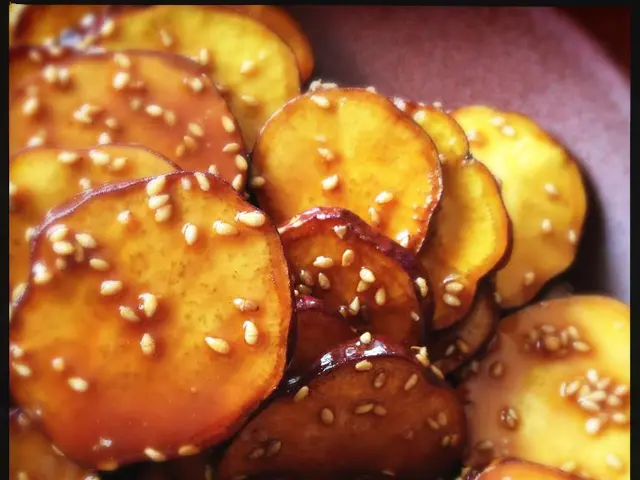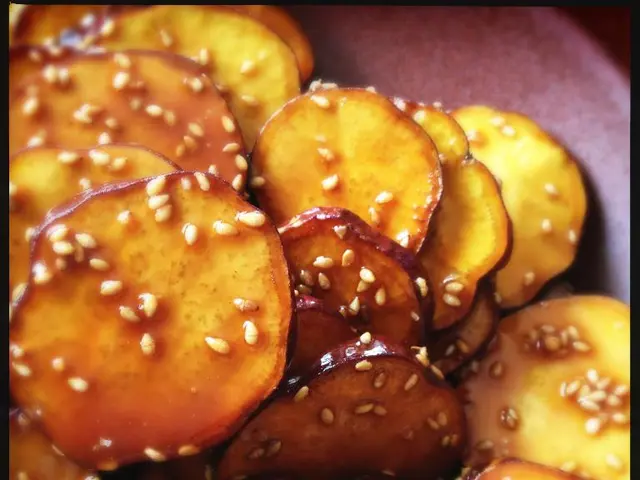Enhancements in Nutri-Scoring System for Food Products
Overhauling Shopping Choices: The Nutriscore Revolution
In just five short years, the Nutriscore label has become an integral part of shopping, gracing 87% of products on the shelves. This straightforward label has disrupted consumer habits, as one passerby admits, "If it's an E, we won't even touch it at all. If it's green, we're all over it." Another shopper chimes in, "At first, I didn't give it a second thought, but now I find myself checking it more and more."
Scant improvements in processed meals
Yet, the composition of convenient meal options hasn't changed much. Since 2020, barely one out of ten products has seen an improvement in its Nutriscore. The majority continue to contain excessive added sugars, water, and at least one additive. The National Consumer Association lobbied the government for mandatory Nutriscore labeling on all products, a promise that the European Union made but ultimately broke two months ago.
Watch the full report above for more insights.
A Powerful Tool for Healthier Choices
Despite its limitations, the Nutri-Score label is proving to be a potent tool for promoting healthier options. In fact, it outperforms warning labels, significantly impacting half of the food categories such as chips, meats, and yogurt [1]. It also aids quick decision-making with intuitive color-coding, even in countries like Mexico where warning labels are already common [1][5]. In Saudi Arabia, Nutri-Score led to a stunning 96% increase in healthier food choices across all categories [5].
A Primer on Nutri-Score 2.0
In 2025, the Nutri-Score algorithm was refined with Nutri-Score 2.0 to better align with public health guidelines [2][3]. The updated criteria now emphasize aspects like fiber, saturated fats, and additives to reflect updated dietary recommendations. While data on prepared meals isn't extensive, the updated algorithm seems to focus on product-specific adjustments, potentially improving accuracy for ready-made meals. However, researchers stress the need for real-world trials to confirm whether these updates lead to better outcomes [3].
Potential Pitfalls and Solutions
Nutri-Score works best in unison with other nudges like shelf labels, so using it alone might only modestly improve diet quality [4]. Its effectiveness varies across markets, suggesting that it may require local adaptation for culturally specific products [1][5]. For prepared meals, Nutri-Score 2.0 might refine classifications considering nutrient interactions, although more research is needed to confirm its precision for composite foods.
- The Nutri-Score label, despite limitations, is proving to be a powerful tool for promoting healthier options, outperforming warning labels in half of the food categories such as chips, meats, and yogurt.
- In fact, in countries like Mexico and Saudi Arabia, the Nutri-Score label has led to significant increases in healthier food choices, with a 96% increase in Saudi Arabia across all categories.
- In 2025, the Nutri-Score algorithm was refined with Nutri-Score 2.0 to better align with public health guidelines, emphasizing aspects like fiber, saturated fats, and additives to reflect updated dietary recommendations.
- However, researchers stress the need for real-world trials to confirm whether these updates lead to better outcomes, and the effectiveness of Nutri-Score may require local adaptation for culturally specific products.
- Yet, the composition of convenient meal options hasn't changed much, with barely one out of ten products seeing an improvement in its Nutriscore since 2020, as many continue to contain excessive added sugars, water, and at least one additive.
- Despite the Nutriscore label gracing 87% of products on the shelves, the National Consumer Association lobbied the government for mandatory Nutriscore labeling on all products, a promise that the European Union made but ultimately broke two months ago.










